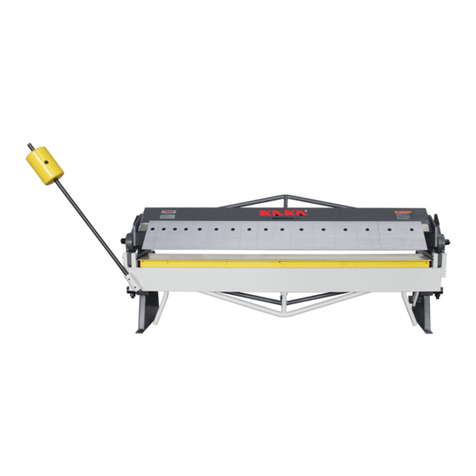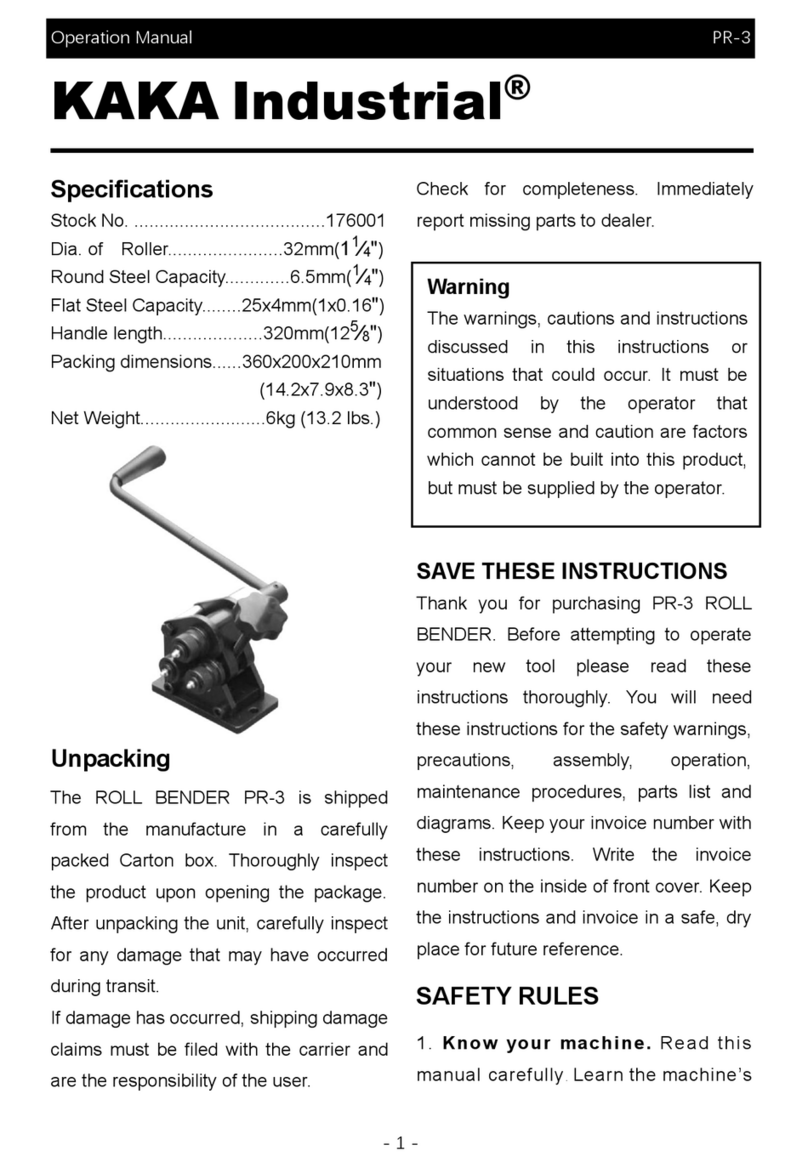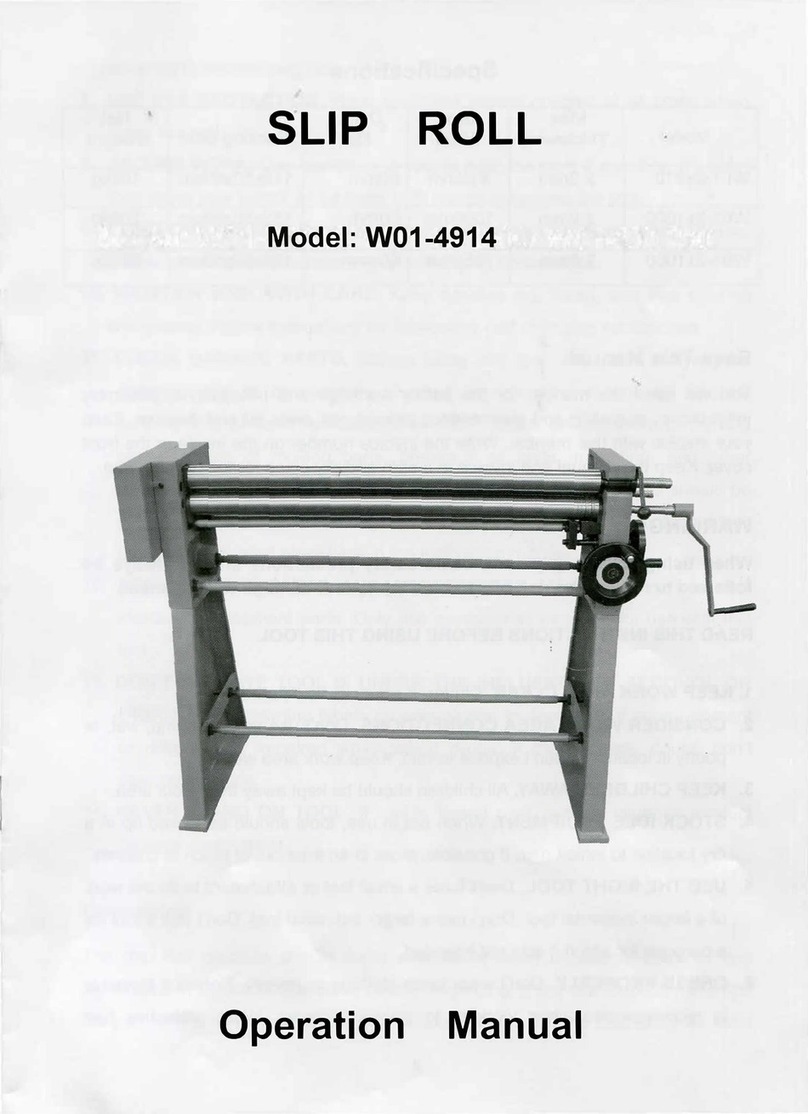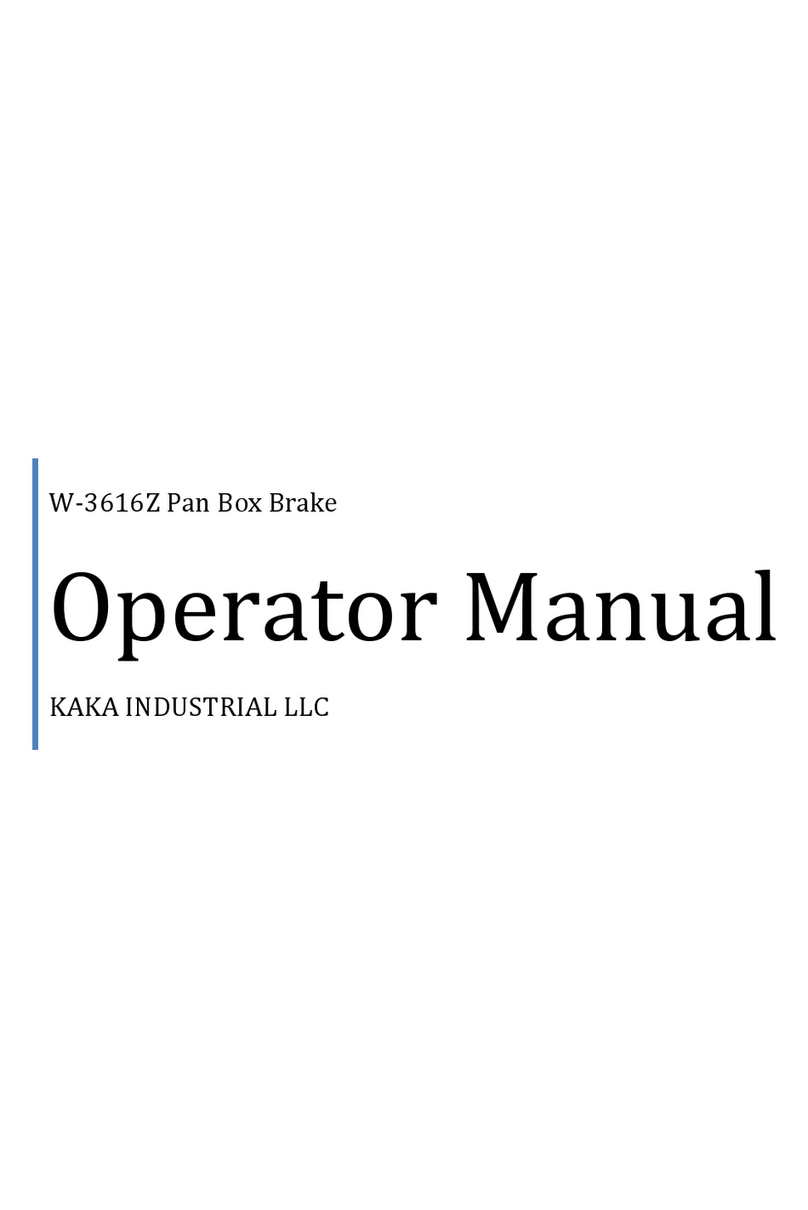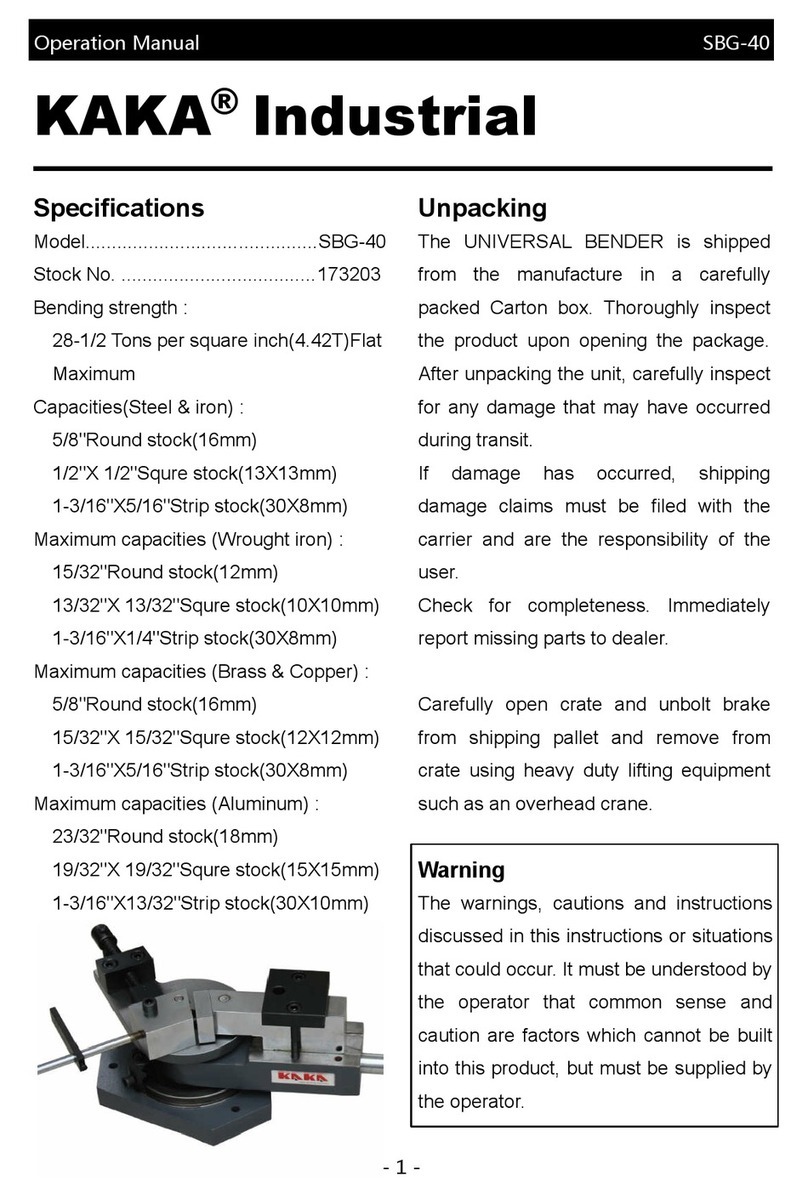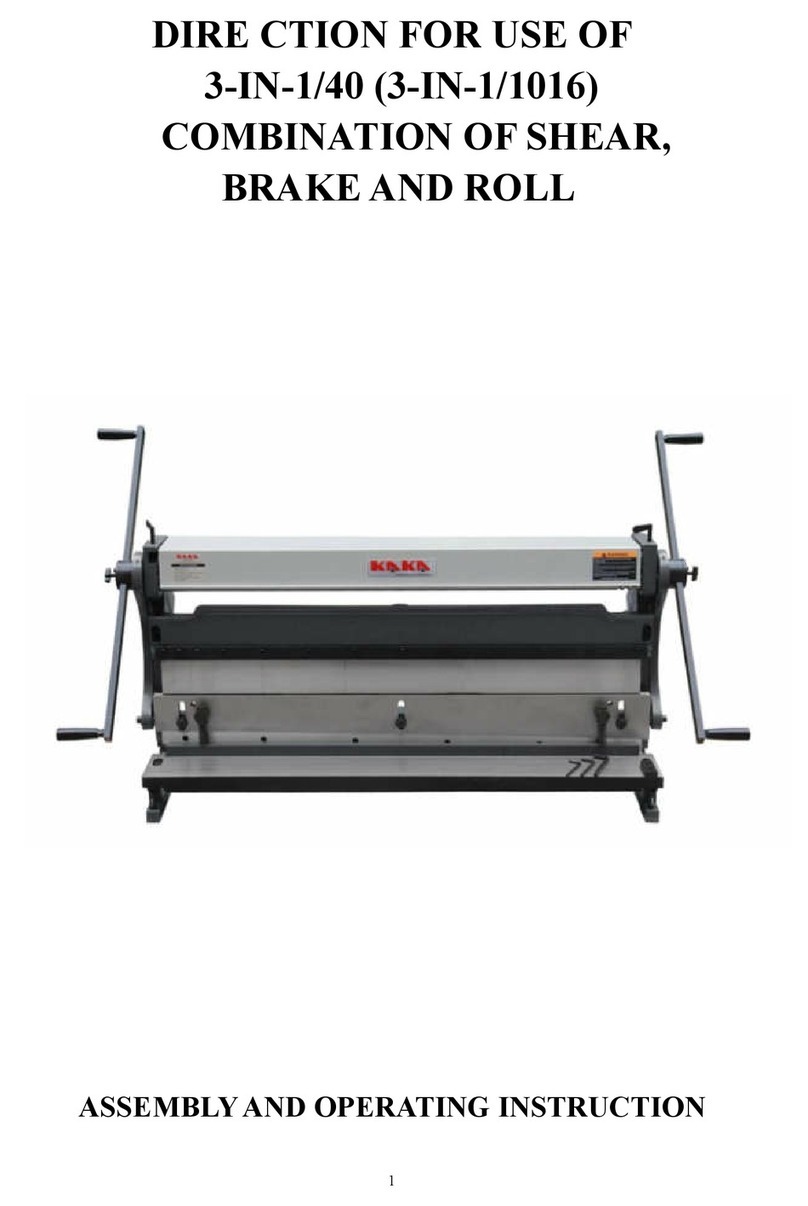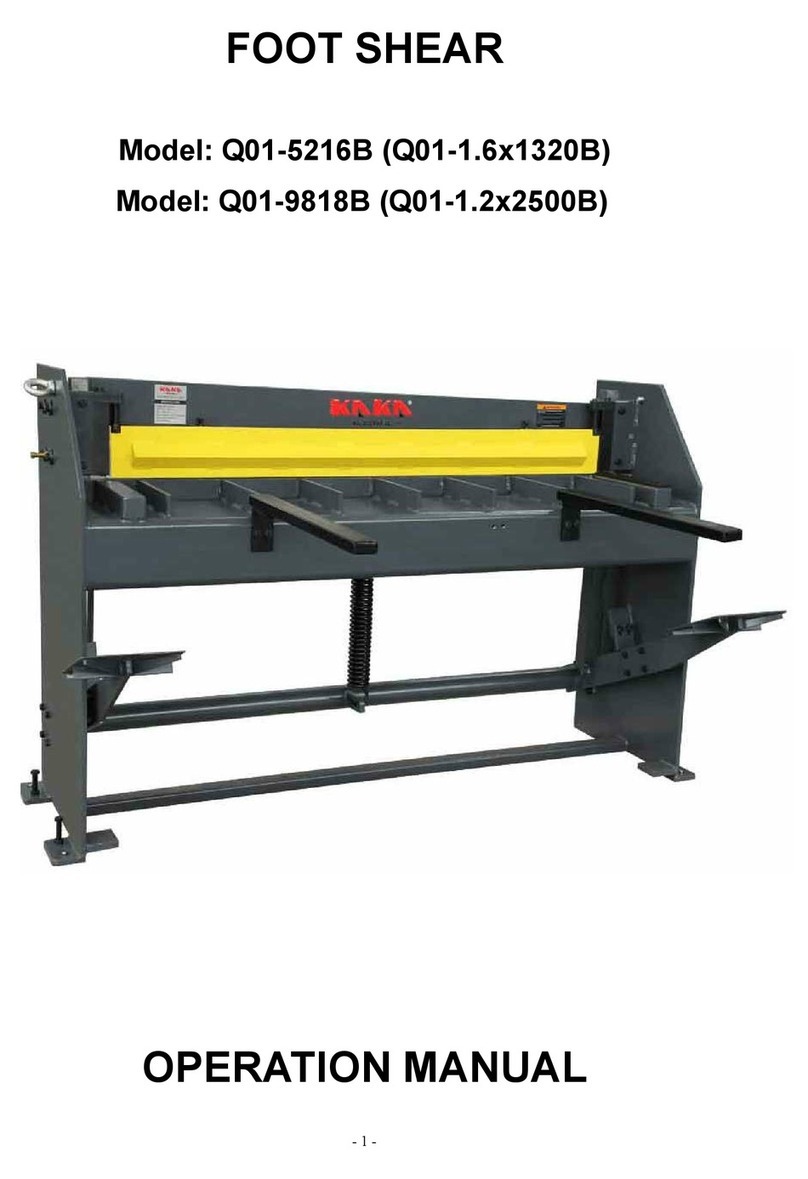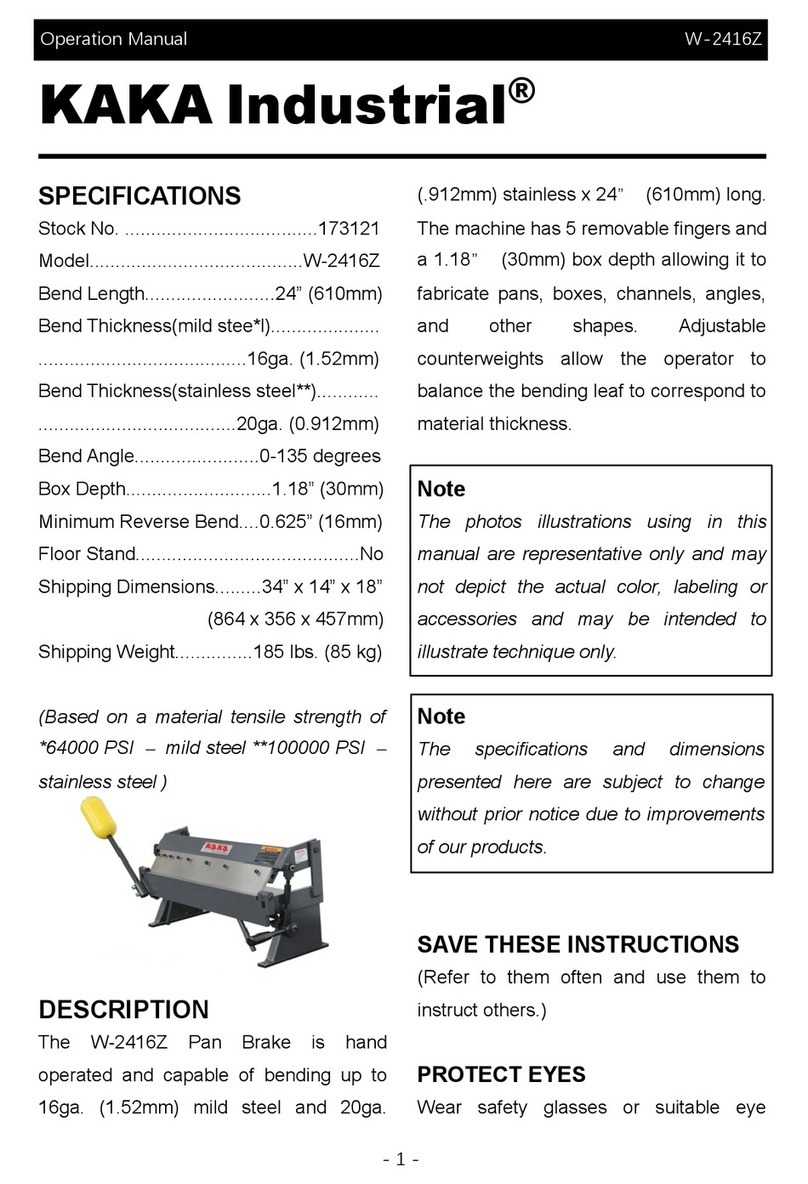
1
I. SAFETY WARNING & CAUTIONS
:When using machine tools, machines, or equipment, basic safety precautions
should always be followed to reduce the risk of fire and personal injury. READ ALL
INSTRUCTIONS BEFORE USING THIS TOOL!
1. KEEP WORK AREA CLEAN. Cluttered work benches and dark work areas may cause
accidents or injury.
2. OBSERVE WORK AREA CONDITIONS. Do not use machines or powered tools in damp, wet, or
poorly lit locations. Don’t expose to rain. Keep work area well lit.
3. KEEP CHILDREN AWAY. Children must never be allowed in the work area. Do not let them
handle machines, tools, or extension cords.
4. STORE IDLE EQUIPMENT. When not in use, tools must be locked up in a dry location to inhibit
rust. Always lock up tools and keep out of reach of children.
5. DO NOT FORCE THE TOOLS. It will do the job better and more safety at the rate for which it was
intended. Do not use inappropriate attachments in an attempt to exceed the tool’s capacities.
6. USE THE RIGHT TOOL FOR THE JOB. Do not attempt to force a small tool or attachment to do
the work of a large industrial tool. Do not use a tool for a purpose for which it was not intended.
7. DRESS PROPERLY. Do not wear loose clothing of jewelry as they can be caught in moving parts.
Protective, electrically non-conductive clothes and non-skid footwear are recommended when
working. Wear restrictive hair covering to contain long hair.
8. USE EYE AND EAR PROTECTION. Always wear ANSI approved chemical splash goggles when
working with chemicals. Always wear ANSI approved impact safety goggles at other times. Wear
a full-face shield if you are producing metal filings or wood chips. Wear an ANSI approved dust
mask or respirator when working around metal, and chemical dusts and mists.
9. DO NOT OVERREACH. Keep proper footing and balance at all times. Do not reach over or
across running machines.
10. MAINTAIN TOOLS WITH CARE. Keep tools sharp and clean for better and safer performance.
Follow instructions for lubricating and changing accessories. The handles must be kept clean, dry,
and free from oil and grease at all times.
11. STAY ALERT. Watch what you are doing; use common sense. Do not operate any tool when you
are tried.
12. CHECK DAMAGED PARTS. Before using any tool, any part that appears damaged should be
carefully checked to determine that it would operate properly and perform its intended function.
Check for alignment and binding of moving parts; any broken parts or mounting fixtures; and any
other condition that may affect proper operation. Any part that is damaged should be properly
repaired or replaced by a qualified technician. Do not use the tool if any switch does not turn on
and off properly.
13. REPLACEMENT PARTS AND ACCESSORIES. When servicing, use only identical replacement

